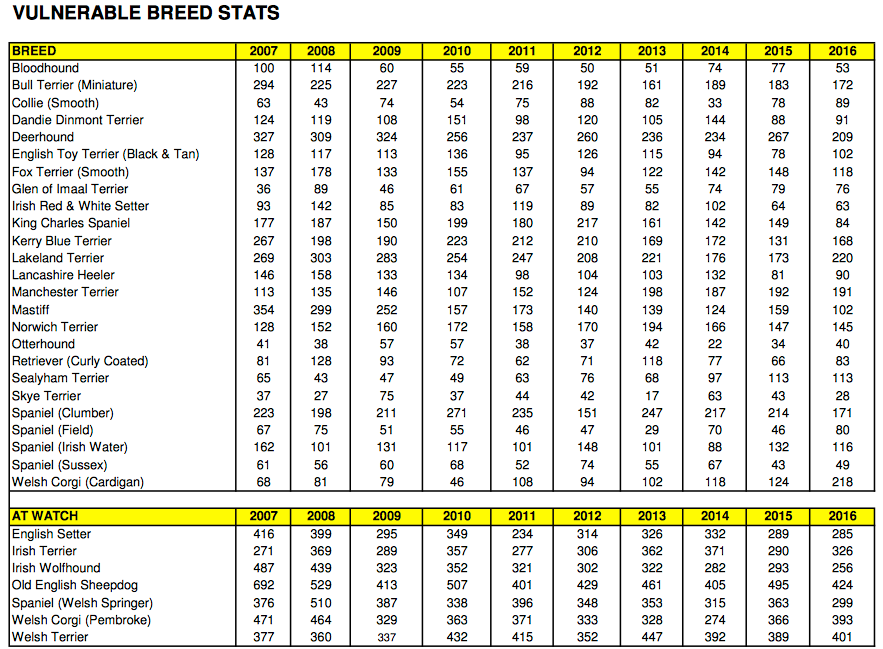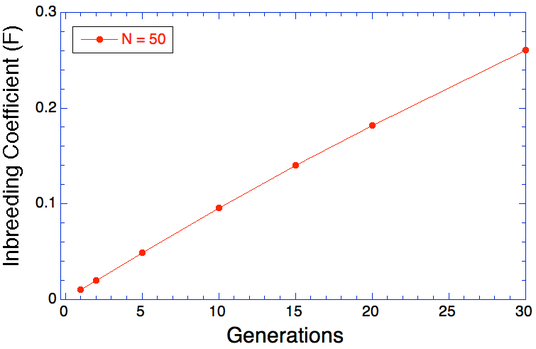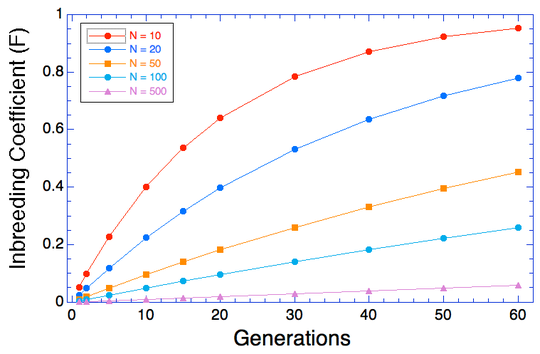Why are these breeds considered to be at risk of extinction? I'll show you using a bit of population genetics.
In the graph below, I've drawn the lines to show how the average inbreeding level increases per generation for various population sizes from 10 to 500 animals, assuming breeding is random. What you can see is that small populations become inbred much faster than large ones. In the worst case here, a population of 10 unrelated animals will reach an inbreeding level of 0.4 (40%) in only 10 generations, while a population of 500 is only about 5% inbred after 60 generations.
For the Bloodhound, for example, 53 registrations translates to about 10 litters from 10 bitches. If we have an equal number of males, the total population size will be 20. You can see that the average level of inbreeding will increase at a rate of about 1% per generation (orange symbols and line). So, by 25 generations, the average mating will be the equivalent of a full sibling cross (25%).
Most populations of wild animals don't survive with inbreeding levels above 25-30%. They are overtaken by small litter size, high puppy mortality, genetic disease, and physical defects. Modern veterinary care and our willingness to pay for it is sustaining many breeds with inbreeding levels even higher than this, but how much longer can they last?
Will this happen? Time will tell.
ICB's online courses
*** BASIC POPULATION GENETICS FOR DOG BREEDERS ***
Starts 6 March 2017
*******************
Join our Facebook Group
ICB Breeding for the Future
...the science of dog breeding
*******************
Visit our Facebook Page
ICB Institute of Canine Biology
...the latest canine news and research




